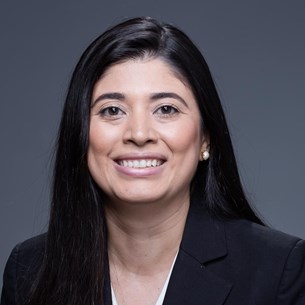Meeting
2022 ASCO Annual Meeting

Norris Cotton Cancer Center, Dartmouth-Hitchcock Medical Center, Lebanon, NH
Ivy Riano , Shruti Rajesh Patel , Inas Abuali , Angela Ai , Gabriella Geiger , Jacqueline Pimienta , Adriana Ramirez Roggio , Natasha Dhawan , Nazli Dizman , Alexandra Lizette Salinas , Narjust Duma
Background: Underrepresentation of women and minorities persists in many aspects of the scholarly publication process as demonstrated by our initial findings presented at ASCO21. Having a gender-balanced and diverse editorial team promotes collaborative work and decreases the publication bias against women. In our initial study, gender and race/ethnicity were determined based on publicly available data. We aimed to add to our study by asking editors to self-report their gender and race to assess the diversity of editors at leading hematology and oncology journals by self-reporting. Methods: We identified 60 journals in oncology, hematology, radiation oncology, and surgical oncology with the highest impact factors. Editors-In-Chief (EiC) and Second-In-Command (SiC) editors (such as deputy, senior and associated editors) were included in the analysis. A demographic survey assessing gender, race/ethnicity, age, and job characteristics was sent to 793 participants via email. Data were analyzed with R software. Results: A total of 66 out of 793 editorial board members responded to the survey. Gender breakdown of respondents was 36 (54.5%) men and 30 (45.8%) women. Most respondents were between the ages of 40 and 60 (69.7%). Thirty-eight (57.6%) of the editors had ≤5 years of editorial experience. Of the 66 respondents, 44 (66.7%) self-identified as non-Hispanic white, followed by 14 (21.2%) as Asian and 3 (4.5%) as Hispanic. Only 1/66 (1.5%) editors self-identified as Black or Native Hawaiian/Other Pacific Islander, and 1/66 (1.5%) did not identify themselves with a racial group. Conclusions: Underrepresented groups in medicine (URM) and women occupied a minority of leadership roles on editorial boards in high-impact hematology and oncology journals. Notably, this study provides new insights into editorial board diversity by using self-reporting as a primary methodology. Limitations of the cross-sectional study is that URM and women are more likely to respond to surveys on diversity, equity, and inclusion potentially skewing the results. Diversity in editorial boards not only can enhance scientific discovery by encouraging submissions from researchers with diverse backgrounds but also promotes career advancement for women and URM.
| Editor-In-Chief | Editor-In-Chief | Second-In-Command | Second-In-Command | |
|---|---|---|---|---|
| Self-Reported Editor's Race/Ethnicity | Female n (%) | Male n (%) | Female n (%) | Male n (%) |
| White | 3 (100.0) | 3 (75.0) | 20 (74.1) | 18 (56.2) |
| Black | 0 (0.0) | 0 (0.0) | 0 (0.0) | 1 (3.1) |
| East Asia | 0 (0.0) | 0 (0.0) | 4 (14.8) | 5 (15.6) |
| South Asia | 0 (0.0) | 0 (0.0) | 2 (7.4) | 3 (9.4) |
| Middle Eastern & North Africa | 0 (0.0) | 1 (25.0) | 0 (0.0) | 1 (3.1) |
| Hispanic | 0 (0.0) | 0 (0.0) | 0 (0.0) | 3 (9.4) |
| Native Hawaiian or Other Pacific Islander | 0 (0.0) | 0 (0.0) | 1 (3.7) | 0 (0.0) |
| Do not identify with any racial category | 0 (0.0) | 0 (0.0) | 0 (0.0) | 1 (3.1) |
Disclaimer
This material on this page is ©2024 American Society of Clinical Oncology, all rights reserved. Licensing available upon request. For more information, please contact licensing@asco.org
2022 ASCO Annual Meeting
Poster Session
Professional Development and Education Advances
Medical Education and Professional Development
Workplace Disparities/Issues
J Clin Oncol 40, 2022 (suppl 16; abstr 11058)
10.1200/JCO.2022.40.16_suppl.11058
11058
249
Abstract Disclosures
2021 ASCO Annual Meeting
First Author: Shruti Rajesh Patel
2022 ASCO Annual Meeting
First Author: Shruti Rajesh Patel
2022 ASCO Annual Meeting
First Author: Sasirekha Pandravada
2022 ASCO Annual Meeting
First Author: Leen Mohammad Al-Kraimeen